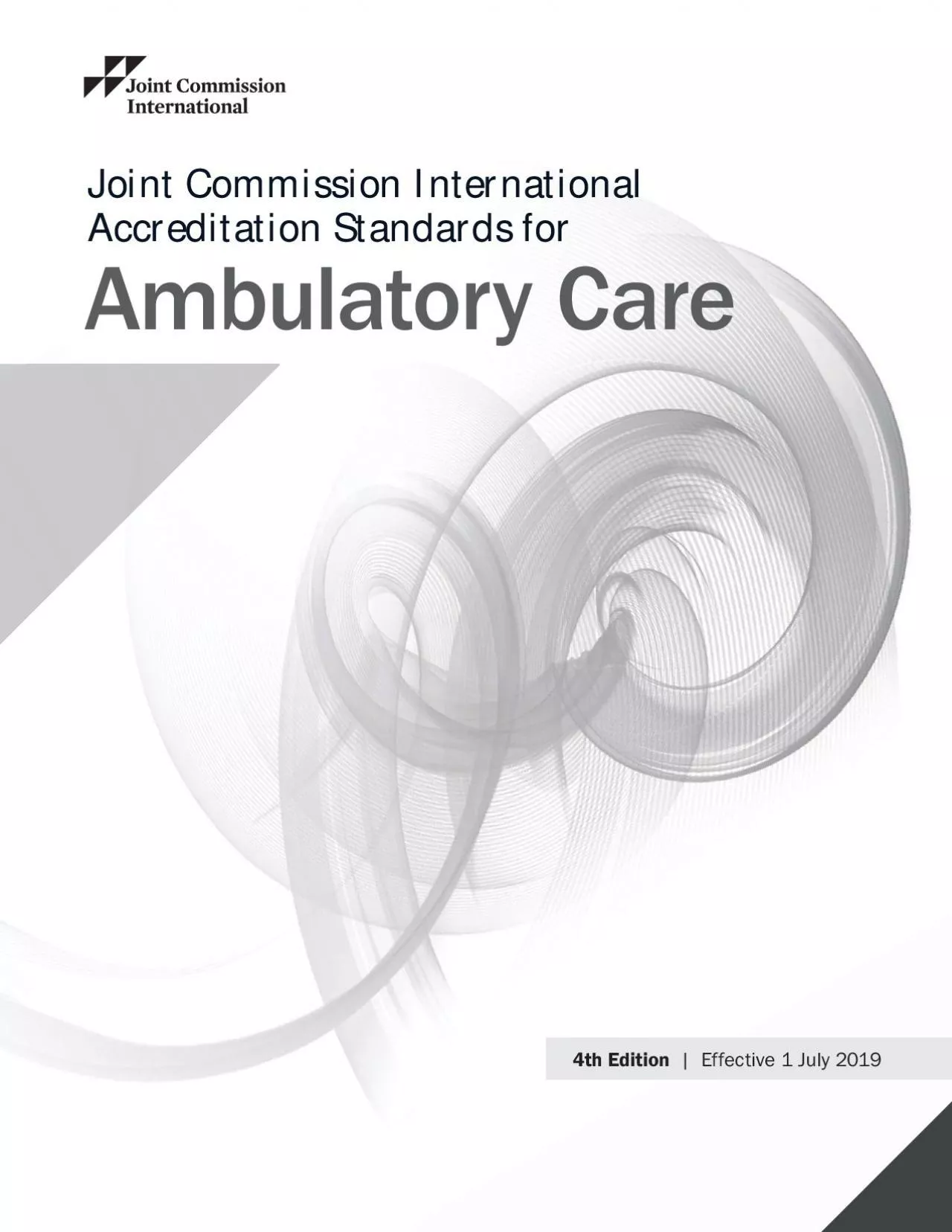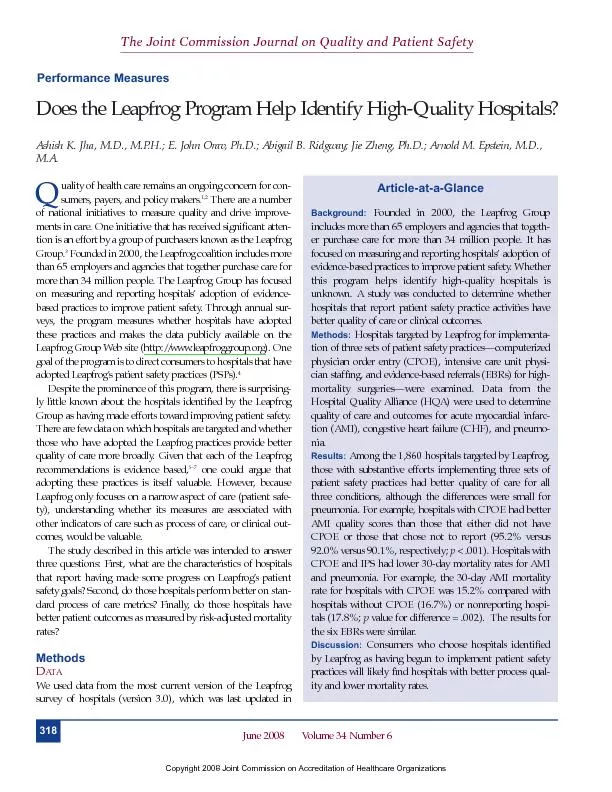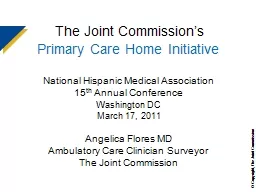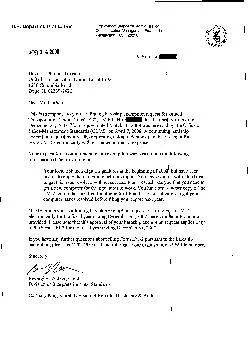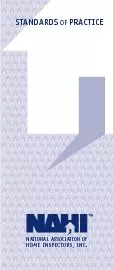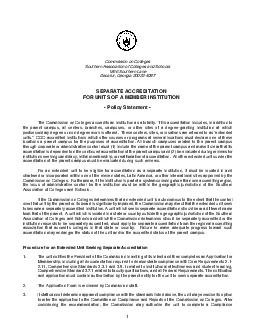PDF-Joint Commission InternationalAccreditation Standards forAmbulatory Ca
Author : valerie | Published Date : 2022-08-21
Effective 1 July 2019 Accreditation Participation Requirements 3Accreditation Participation Requirements APR Requirement APR1e ambulatory care organization meets
Presentation Embed Code
Download Presentation
Download Presentation The PPT/PDF document "Joint Commission InternationalAccreditat..." is the property of its rightful owner. Permission is granted to download and print the materials on this website for personal, non-commercial use only, and to display it on your personal computer provided you do not modify the materials and that you retain all copyright notices contained in the materials. By downloading content from our website, you accept the terms of this agreement.
Joint Commission InternationalAccreditation Standards forAmbulatory Ca: Transcript
Download Rules Of Document
"Joint Commission InternationalAccreditation Standards forAmbulatory Ca"The content belongs to its owner. You may download and print it for personal use, without modification, and keep all copyright notices. By downloading, you agree to these terms.
Related Documents

